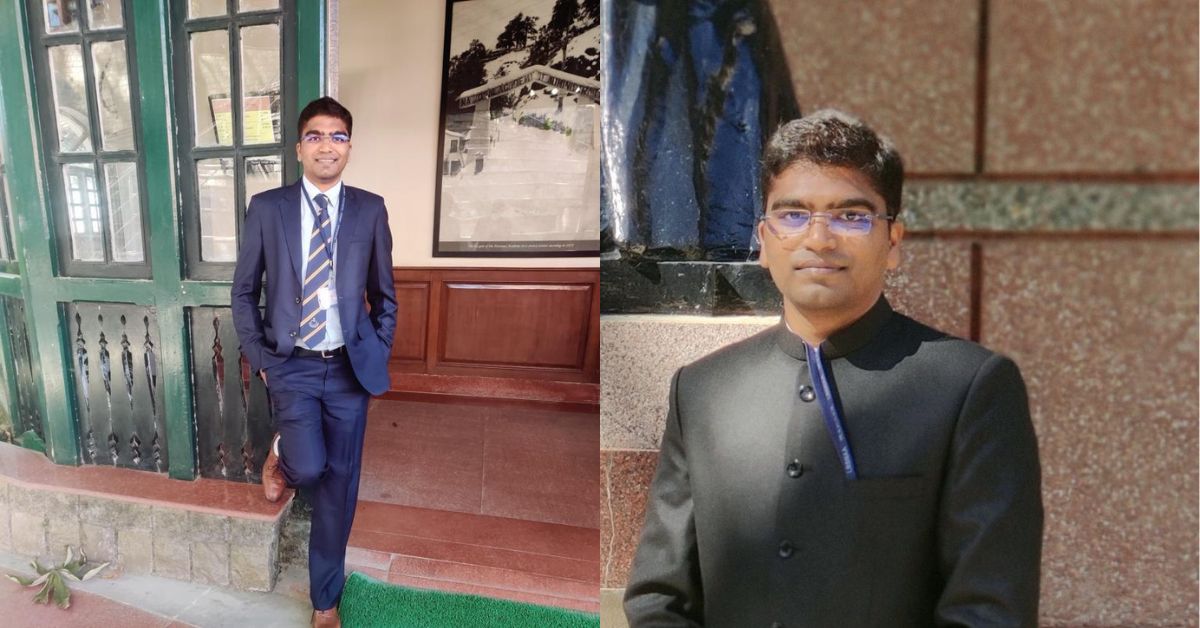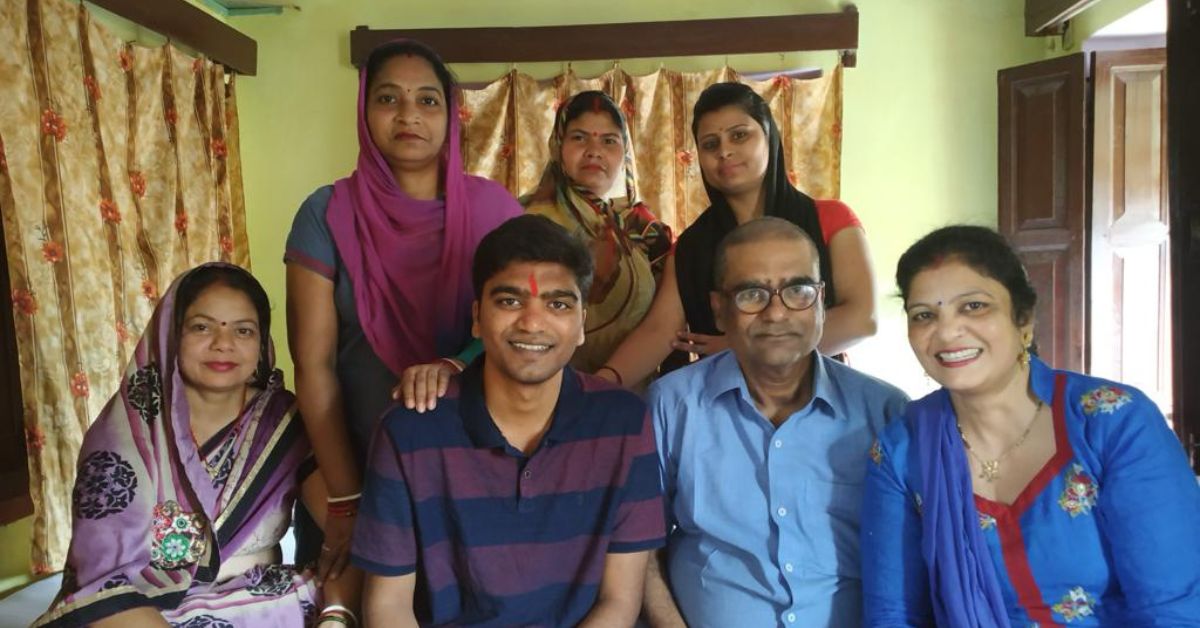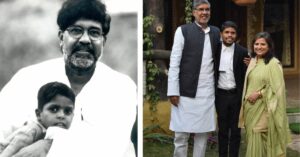‘Studied Under Kerosene Lamps’: How a Boy From a Bihar Village Became an IAS Officer Without Coaching
Born in a tiny village in Bihar's Buxar district, IAS officer Anshuman Raj cracked the UPSC CSE without any coaching.

As a young adult in search of a lucrative career, Anshuman Raj never aspired to become an IAS officer despite being surrounded by the UPSC aspirants in his native state Bihar which produces the highest number of IAS officers after Uttar Pradesh.
“These officers serve the country at the highest administrative levels. I had heard how being an IAS officer was a great deal in Bihar. But coming from an impoverished background, I never really aspired to be one. I lacked the courage to dream so big. I preferred being realistic,” he tells The Better India.
While fulfilling his responsibilities toward his family, the marine engineer eventually took his shot and, in 2019, he cleared the UPSC CSE examination with an All India Rank (AIR) of 107.
But this feat did not come easy.

Anshuman cracked the challenging UPSC exam without any coaching. He fought an unfavourable fate with determination and hard work to finally emerge victorious as an IAS officer.
Here’s his inspiring story.
Studied under a kerosene lamp
Growing up in a Bihar village that lacked basic amenities like road connectivity and power, Anshuman studied under a kerosene lamp during his schooling in the Nawanagar village of Buxar district.
“We would get power, typically low-voltage, hardly for 3-4 hours in our village. In such a situation, kerosene lamps served as a resource for us,” says the 31-year-old.
Meanwhile, being born into a family with limited means, Anshuman also saw his mother toil day and night to feed them.
“My mother worked as a shiksha mitra (para teacher). Her monthly income was Rs 1,500. After coming home from school, she would run a beauty parlour here in the village for some additional income. She managed all this alongside the household chores,” he shares.
“She became the sole breadwinner of our family after my father suffered huge losses in his rice mill business in 2002. Later, he was also diagnosed with liver cirrhosis that restricted him to the bed,” he adds.

Being the elder son of the house, he aspired to cater to his family’s needs. After his graduation in 2013, he took up a job to work as a marine engineer for a Hong Kong-headquartered company.
While juggling a full-time job at the ship, Anshuman started preparing for the UPSC examination.
Achieved success in stages
As part of his work, Anshuman had to remain on the ship for at least six months – away from the outside world without internet connectivity. Like any other aspirant, it was a little challenging for him to entirely dedicate himself to the preparation.
After every six months, he says, he would get a three-month off. To utilise this period, he went to his younger brother in Haldia, West Bengal, to prepare for the exam. “It was not possible for me to go to New Delhi to join a coaching institute and my home didn’t have a designated space to study as we lived in a joint family of 30 members. I just needed a secluded environment for self-study,” he adds.
In 2016, he appeared for the preliminary level of the UPSC examination and cleared it in his first attempt. Sadly, Anshuman failed to clear the Mains examination as he missed the cut-off, he explains, with a very low margin. Again, he boarded the ship for six months.

In his second attempt in 2017, Anshuman moved to Delhi to prepare for the Mains examination, but this time, with better study material. “I joined a library in Old Rajendra Nagar. Every day, I would leave for the library at 7 am and then come back to my room by 11 pm,” he adds.
With three months of preparation, he cleared the Mains examination on his second attempt but could not clear the interview stage. “When I was informed that I had to appear for the interview, I was in Brazil for work. I roughly had 20 days to prepare for my interview,” he adds with a sigh.
Without losing hope, he again appeared for the UPSC examination in 2018. With roughly a month left until the Mains examination, Anshuman suffered from Appendicitis.
“I was in severe pain. The doctor had misdiagnosed me and reasoned that the pain was due to food poisoning. I studied with pain and frequent vomiting. It was only after the Mains exam that I was diagnosed with the disease and the surgery was performed,” he shares, adding that luckily everything went well.

In 2018, he cleared every round of the examination and was selected for the Indian Revenue Service. In 2019, Anshuman again appeared for the examination as he wished to join the Indian Administrative Service with a better rank.
Finally, he cleared the UPSC CSE examination with an AIR of 107. Currently, the 2020-batch IAS officer is posted as a Sub-Divisional Magistrate (SDM) Narsinghgarh in Madhya Pradesh.
“Throughout this period, my preparation was in segments and there was no continuity. I could not afford to quit my job and completely dedicate myself to preparation. Like me, many people want to appear for the UPSC exam but they are hesitant to quit a job for preparation as it requires family support,” says Anshuman, who quit his job in 2018. If you found our stories insightful, informative, or even just enjoyable, we invite you to consider making a voluntary payment to support the work we do at The Better India. Your contribution helps us continue producing quality content that educates, inspires, and drives positive change. Choose one of the payment options below for your contribution- By paying for the stories you value, you directly contribute to sustaining our efforts focused on making a difference in the world. Together, let’s ensure that impactful stories continue to be told and shared, enriching lives and communities alike. Thank you for your support. Here are some frequently asked questions you might find helpful to know why you are contributing?

“I have been fortunate that my family understood me. They never imposed their decisions on me irrespective of our financial constraints and always encouraged me to chase my dreams. I credit my success to my family,” he adds.
Edited by Padmashree Pande. All images: Anshuman Raj.
This story made me
-
97
-
121
-
89
-
167













